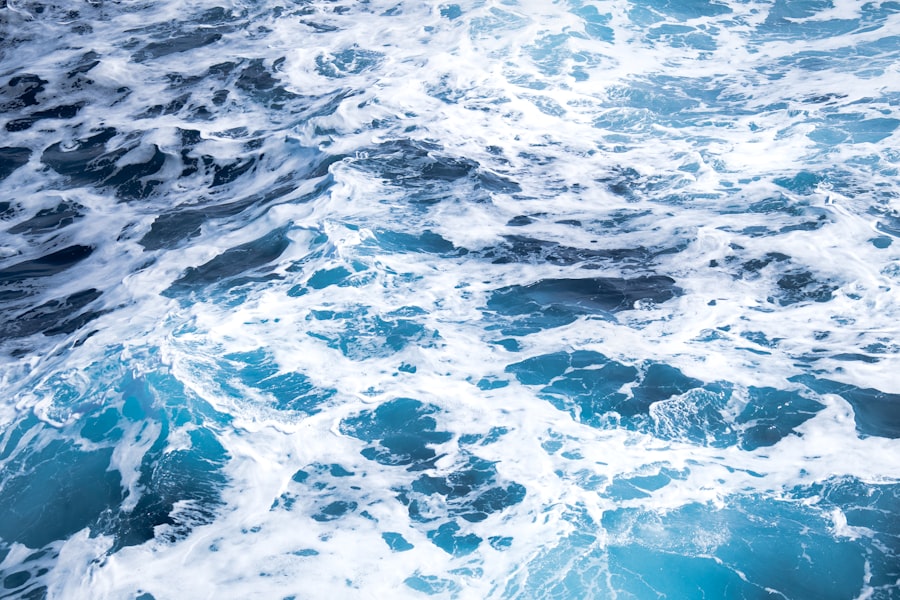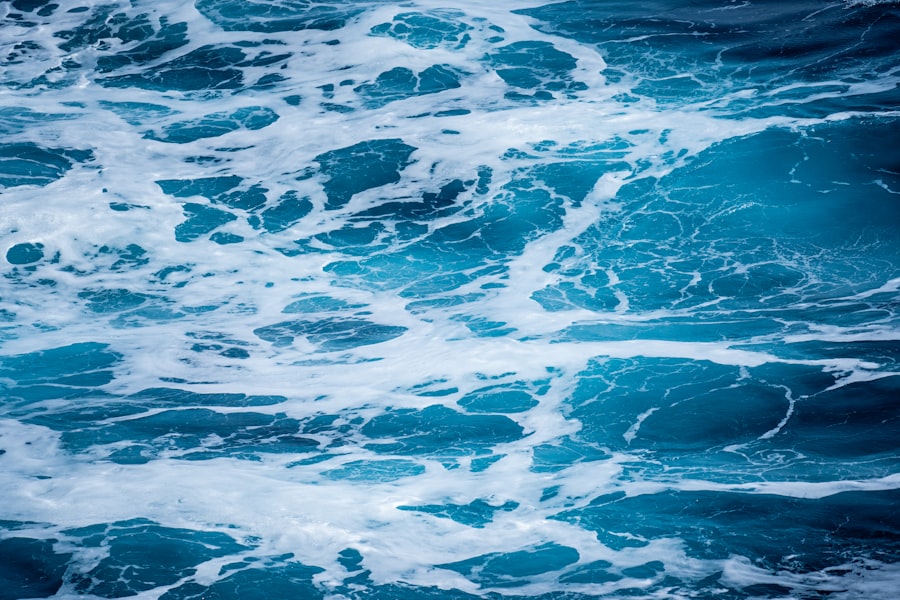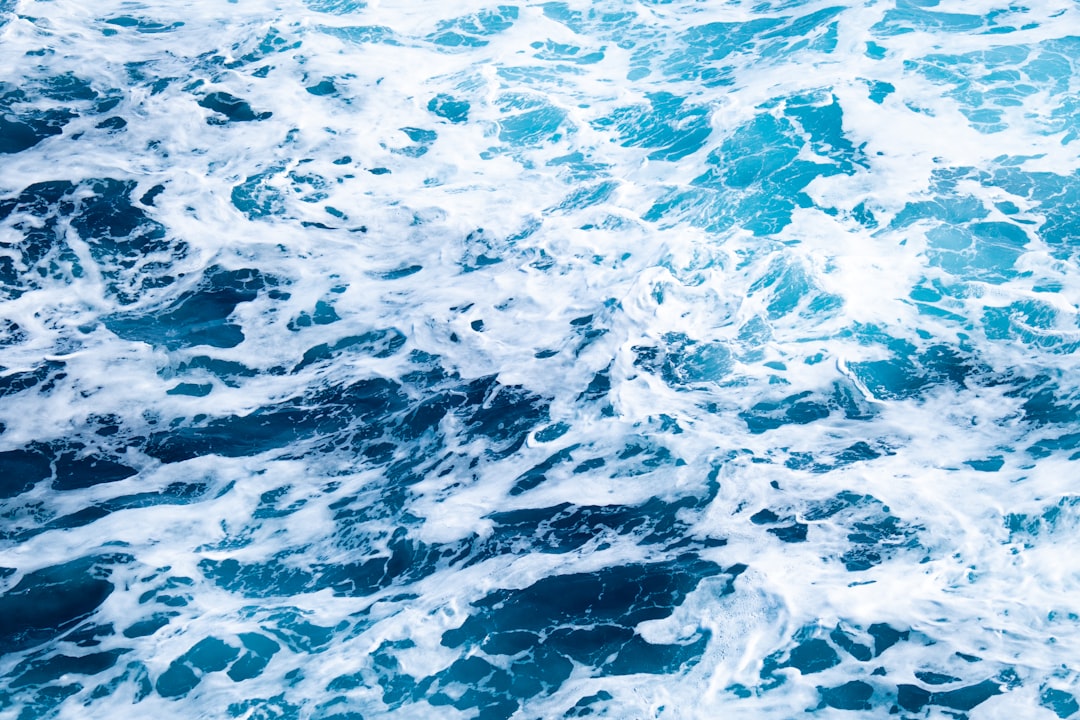The Drake Passage, a body of water situated between the southern tip of South America and Antarctica, is renowned for its tumultuous seas and unpredictable weather. Spanning approximately 600 kilometers (370 miles) in width, it serves as a critical maritime route for vessels traveling to and from the Antarctic region. Named after the English explorer Sir Francis Drake, who navigated these waters in the late 16th century, the passage is often regarded as one of the most challenging stretches of ocean in the world.
Its strategic location not only connects the Atlantic and Pacific Oceans but also plays a vital role in global oceanic currents, influencing climate patterns far beyond its immediate vicinity.
This current is responsible for the passage’s notorious reputation, as it can create rough seas and high waves that pose significant challenges for mariners.
The Drake Passage is not merely a geographical feature; it is a dynamic ecosystem that reflects the intricate interplay between land and sea, making it a focal point for scientific research and exploration. Understanding its geography and hydrology is essential for anyone considering a journey through these waters.
Key Takeaways
- The Drake Passage is a narrow body of water between South America’s Cape Horn and the South Shetland Islands of Antarctica, known for its rough seas and challenging navigation.
- The weather in the Drake Passage is unpredictable and can change rapidly, with strong winds and high waves being common.
- The passage is home to a diverse range of wildlife, including whales, seals, and various seabird species such as albatrosses and petrels.
- Safety precautions for navigating the Drake Passage include securing all loose items, wearing appropriate clothing, and following the instructions of the crew.
- When choosing a vessel for crossing the Drake Passage, consider factors such as size, stability, and experience of the crew.
Weather and Climate in the Drake Passage
The weather in the Drake Passage is notoriously unpredictable, with conditions that can change rapidly within a matter of hours. The region experiences a maritime climate, characterized by cool temperatures and high humidity. During the summer months, temperatures can range from 0°C to 10°C (32°F to 50°F), while winter brings even colder conditions, often plunging below freezing.
Precipitation is common in the Drake Passage, with rain and snow occurring throughout the year. The convergence of warm and cold air masses in this region often leads to stormy weather, making it essential for those navigating these waters to stay informed about current conditions.
Mariners must be prepared for sudden changes in weather, as storms can develop quickly and without warning. Understanding the climate patterns of the Drake Passage is crucial for ensuring a safe and successful journey.
Wildlife in the Drake Passage

The Drake Passage is not only a challenging maritime route but also a vibrant ecosystem teeming with diverse wildlife. The nutrient-rich waters support an array of marine life, including various species of fish, krill, and plankton, which serve as the foundation of the food chain. This abundance attracts numerous seabirds, such as albatrosses, petrels, and gulls, which can often be seen soaring above the waves.
The sight of these majestic birds gliding effortlessly through the air adds to the allure of this remarkable region. In addition to seabirds, the passage is home to several species of marine mammals. Whales are a common sight in these waters, with species such as humpback whales, orcas, and minke whales frequently spotted during crossings.
The presence of these magnificent creatures highlights the ecological significance of the Drake Passage and underscores the importance of conservation efforts in protecting their habitats. For wildlife enthusiasts and nature lovers, a journey through the Drake Passage offers unparalleled opportunities to observe these incredible animals in their natural environment.
Safety Precautions for Navigating the Drake Passage
| Safety Precautions | Details |
|---|---|
| Life Jackets | All passengers must wear life jackets while on deck or in the zodiacs. |
| Emergency Drills | Participate in mandatory emergency drills to familiarize with safety procedures. |
| Weather Monitoring | Continuous monitoring of weather conditions to ensure safe navigation. |
| Experienced Crew | Trained and experienced crew members to handle any emergency situations. |
| Medical Facilities | Onboard medical facilities and staff to provide immediate medical assistance if needed. |
Navigating the Drake Passage requires careful planning and adherence to safety precautions due to its unpredictable nature. Mariners should always check weather forecasts before embarking on their journey and remain vigilant for any changes in conditions while at sea. It is advisable to equip vessels with reliable communication devices, such as satellite phones or emergency beacons, to ensure that help can be summoned if needed.
Additionally, having a well-stocked first aid kit on board is essential for addressing any medical emergencies that may arise during the crossing. Proper training and experience are also critical components of safe navigation in the Drake Passage. Crew members should be familiar with emergency procedures and know how to operate safety equipment such as life rafts and flares.
It is beneficial for those planning to cross the passage to participate in training courses focused on maritime safety and survival skills. By taking these precautions seriously, travelers can significantly reduce risks and enhance their overall experience while navigating this challenging waterway.
Choosing the Right Vessel for Crossing the Drake Passage
Selecting an appropriate vessel for crossing the Drake Passage is paramount to ensuring a safe and comfortable journey. The type of vessel chosen will depend on various factors, including the size of the crew, intended activities during the crossing, and personal preferences regarding comfort and amenities. Ice-strengthened ships are often recommended for this route due to their ability to withstand harsh conditions and navigate through icy waters.
For those seeking a more adventurous experience, smaller expedition vessels may be ideal. These ships often provide a more intimate atmosphere and allow for closer encounters with wildlife. However, it is essential to ensure that any vessel chosen is equipped with modern navigation technology and safety features.
Regardless of size or type, all vessels should be well-maintained and operated by experienced crews familiar with the challenges posed by the Drake Passage.
Navigation Tips for the Drake Passage

Navigating through the Drake Passage requires skillful seamanship and an understanding of local maritime conditions. One crucial tip for successful navigation is to maintain a flexible itinerary that allows for adjustments based on weather patterns. Mariners should be prepared to alter their course or delay their departure if conditions are unfavorable.
Utilizing advanced navigation tools such as GPS systems and radar can also enhance safety by providing real-time information about surrounding vessels and potential hazards. Additionally, keeping a close eye on sea state conditions is vital for safe navigation. Understanding wave patterns and currents can help mariners anticipate changes in sea conditions and adjust their speed accordingly.
It is also advisable to establish regular communication with other vessels in the area to share information about weather updates or any obstacles encountered during the crossing. By employing these navigation tips, sailors can enhance their chances of successfully traversing the challenging waters of the Drake Passage.
What to Pack for a Journey through the Drake Passage
Packing appropriately for a journey through the Drake Passage is essential for ensuring comfort and safety during the crossing. Travelers should prioritize waterproof clothing that provides insulation against cold temperatures and wind chill. Layering is key; thermal base layers, fleece mid-layers, and waterproof outer shells will help regulate body temperature while keeping moisture at bay.
Sturdy footwear with good traction is also important for navigating wet decks and slippery surfaces. In addition to clothing, travelers should consider bringing personal items such as sunscreen, sunglasses, and hats to protect against UV rays reflected off the water’s surface. A good quality camera or binoculars can enhance wildlife viewing experiences, allowing travelers to capture memories of their journey through this stunning region.
Finally, packing seasickness remedies—whether over-the-counter medications or natural alternatives—can help mitigate discomfort during rough crossings.
Historical Significance of the Drake Passage
The historical significance of the Drake Passage extends far beyond its challenging navigation; it has played a pivotal role in maritime exploration and scientific research over centuries. Early explorers like Sir Francis Drake sought new trade routes and territories during their voyages through these waters, paving the way for future expeditions to Antarctica. The passage became a critical route for whalers and sealers in the 19th century as they sought resources from the rich waters surrounding Antarctica.
In modern times, the Drake Passage has become an important area for scientific research focused on climate change and marine ecosystems. Researchers study ocean currents, temperature variations, and wildlife populations to gain insights into broader environmental trends affecting our planet. The passage serves as a living laboratory where scientists can observe firsthand how climate change impacts marine life and ecosystems in one of Earth’s most remote regions.
Challenges of Navigating the Drake Passage
Navigating the Drake Passage presents numerous challenges that can test even experienced mariners. One of the most significant obstacles is its unpredictable weather patterns; storms can develop rapidly, creating treacherous conditions that require quick decision-making and adaptability from crew members. High winds and large swells can lead to rough seas that make steering difficult and increase the risk of capsizing or losing cargo.
Another challenge lies in managing fatigue among crew members during long crossings. The physical demands of navigating rough waters can take a toll on both mental and physical well-being. It is crucial for crews to establish watch schedules that allow for adequate rest while ensuring constant vigilance over navigation tasks.
By recognizing these challenges ahead of time, mariners can better prepare themselves for what lies ahead when traversing this formidable passage.
Tips for Overcoming Seasickness in the Drake Passage
Seasickness is a common concern for travelers embarking on a journey through the Drake Passage due to its notorious rough seas. To mitigate discomfort associated with motion sickness, individuals should consider several strategies before setting sail. One effective approach is to choose accommodations located near the center of the vessel where motion tends to be less pronounced compared to areas closer to bow or stern.
Additionally, staying hydrated and consuming light meals prior to departure can help reduce nausea symptoms during rough crossings. Many travelers find relief through over-the-counter medications specifically designed for motion sickness; however, natural remedies such as ginger tea or acupressure wristbands may also provide comfort without side effects associated with pharmaceuticals. By employing these tips, travelers can enhance their chances of enjoying their journey through this remarkable passage without succumbing to seasickness.
The Beauty of the Drake Passage: Scenic Highlights
Despite its challenges, the Drake Passage offers breathtaking scenic highlights that captivate all who venture through its waters. The dramatic landscapes surrounding this body of water are characterized by rugged coastlines, towering icebergs, and expansive views of both ocean and sky. As vessels navigate through these waters, passengers are often treated to stunning vistas that showcase nature’s raw beauty at its finest.
One particularly awe-inspiring sight is witnessing icebergs calving from glaciers along Antarctica’s coastline—a phenomenon that leaves observers in sheer wonder at nature’s power. Additionally, sunsets over the open ocean create mesmerizing displays of color that reflect off tranquil waters while seabirds soar overhead in search of food below. For those fortunate enough to experience it firsthand, traversing the Drake Passage becomes not just a journey but an unforgettable adventure filled with moments of beauty that linger long after returning home.
The Drake Passage, a significant body of water located between the southern tip of South America and Antarctica, is renowned for its challenging navigation conditions and its role in global ocean circulation. For those interested in exploring more about geographical wonders and their implications, you might find the article on MyGeoQuest insightful. This resource delves into various geographical phenomena, offering a broader understanding of how such natural features impact our world.
WATCH NOW! Drake Passage: Earth’s Deadliest Waters Revealed
FAQs
What is the Drake Passage?
The Drake Passage is a body of water located between the southern tip of South America (Cape Horn) and the South Shetland Islands of Antarctica. It connects the southwestern part of the Atlantic Ocean with the southeastern part of the Pacific Ocean.
How wide is the Drake Passage?
The Drake Passage is approximately 800 kilometers (500 miles) wide at its narrowest point.
What is the significance of the Drake Passage?
The Drake Passage is known for its notoriously rough and unpredictable seas, making it one of the most challenging maritime routes in the world. It is also a major thoroughfare for the movement of ocean currents and marine life between the Atlantic and Pacific Oceans.
What is the climate like in the Drake Passage?
The climate in the Drake Passage is characterized by strong winds, high waves, and cold temperatures. It is often subject to intense storms and rough seas due to the convergence of the Antarctic Circumpolar Current and the westerly winds.
What wildlife can be found in the Drake Passage?
The Drake Passage is home to a diverse range of marine life, including whales, seals, penguins, and various seabird species. It is also a popular area for birdwatching and wildlife observation due to its rich biodiversity.
